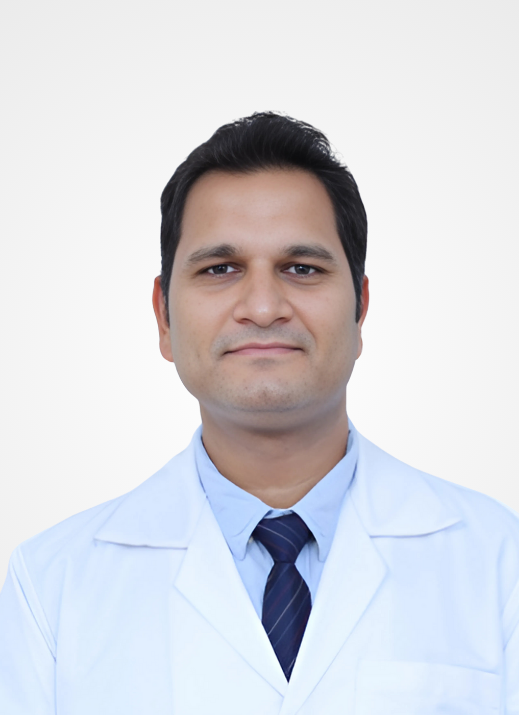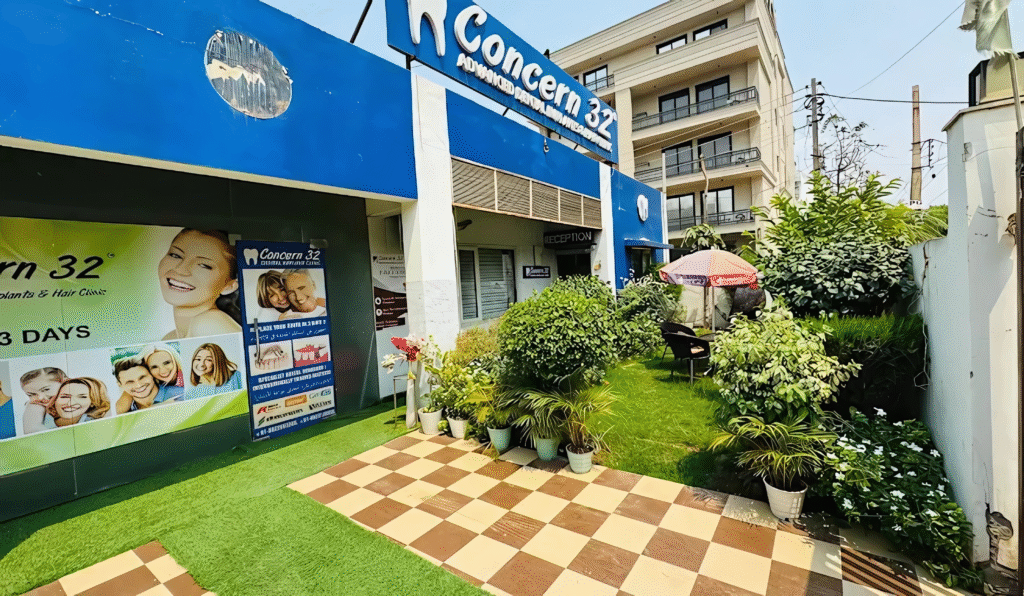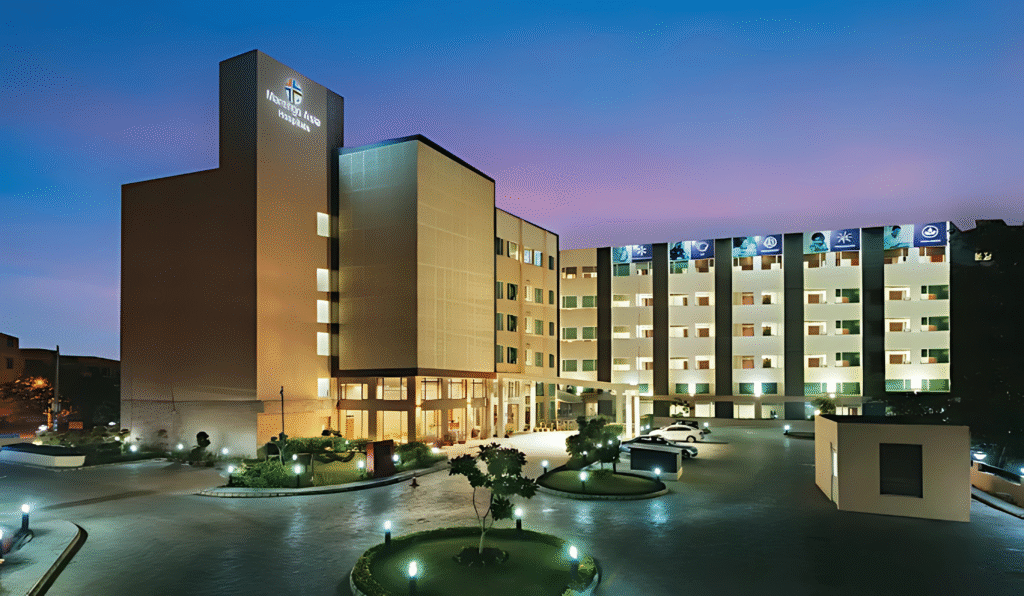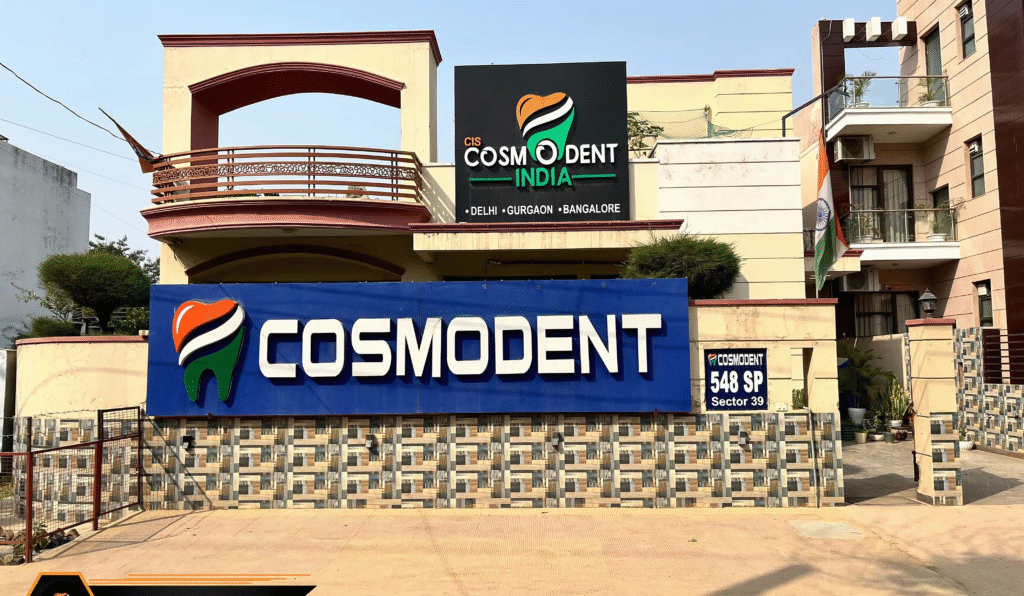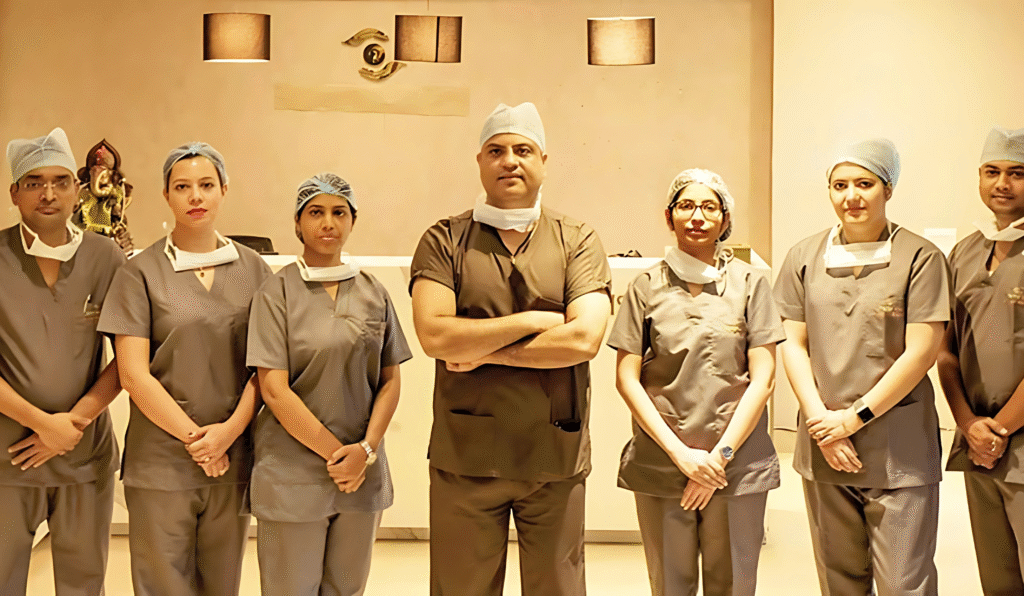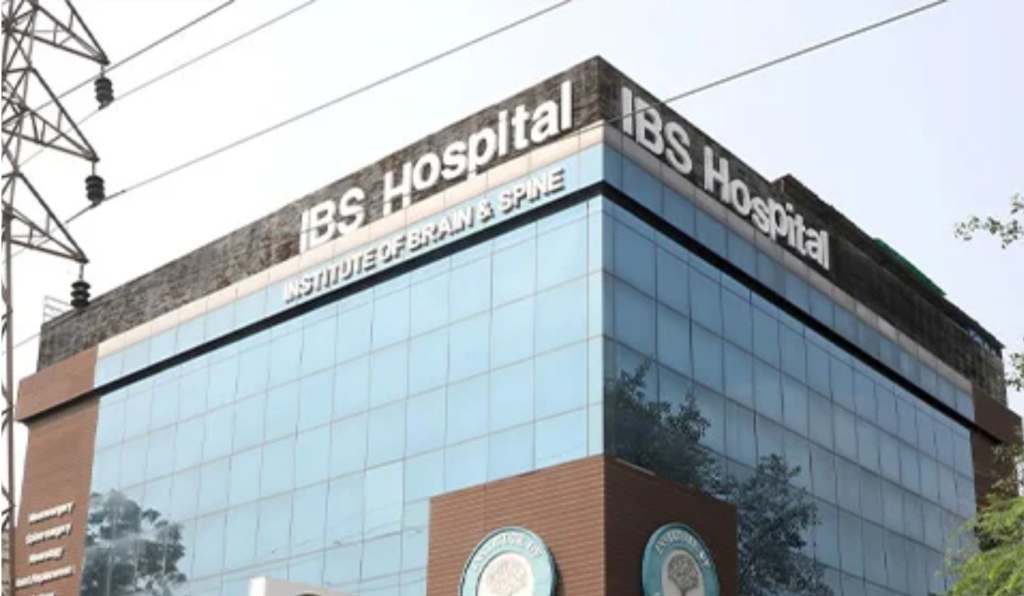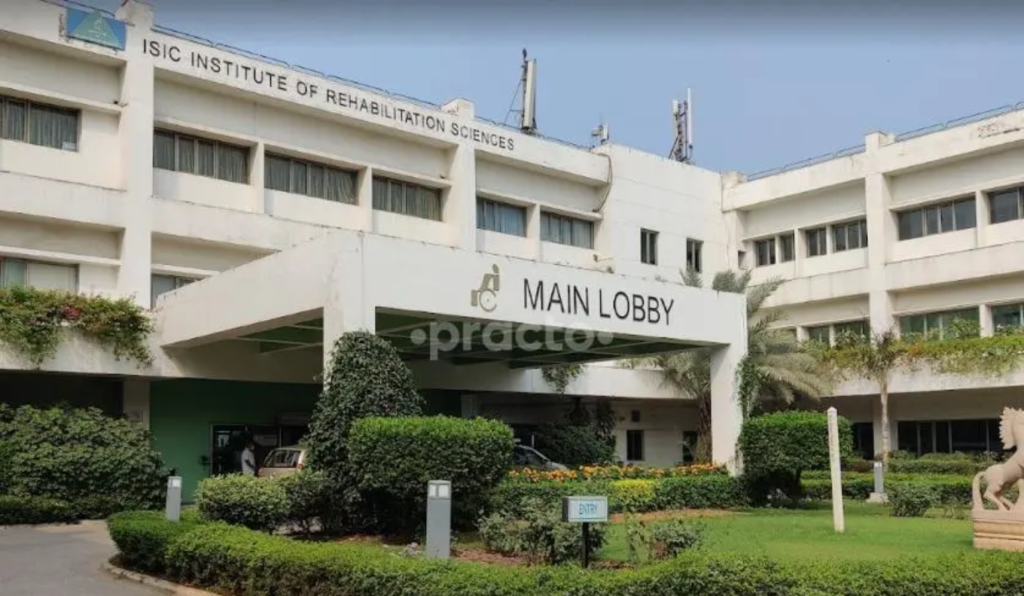Pancreatic Cancer Treatment Cost in India

What is Pancreatic Cancer?
Pancreatic cancer is a malignant disease that starts in the tissues of the pancreas — an essential organ located behind the stomach, responsible for producing digestive enzymes and hormones like insulin. This cancer is particularly aggressive because it often remains undetected until it has reached an advanced stage, making early diagnosis crucial yet challenging.
There are two main types of pancreatic cancer:
Exocrine tumors, the most common type, arise from the cells that produce digestive juices.
Neuroendocrine tumors (NETs) originate from hormone-producing cells and are relatively rare.
Pancreatic cancer can grow rapidly and spread to nearby organs such as the liver, intestines, and lungs. Due to its silent progression, it is often diagnosed at a later stage when treatment options become limited. However, with recent medical advancements, survival rates are gradually improving when detected early and treated appropriately.
How Does Prostate Cancer Develop?
Pancreatic cancer develops when genetic mutations occur in pancreatic cells, causing them to multiply uncontrollably and avoid natural cell death. These cancerous cells eventually accumulate and form a tumor. Over time, the tumor can invade nearby tissues and organs and enter the bloodstream or lymphatic system, allowing cancer to metastasize to distant parts of the body.
Most pancreatic cancers start in the ductal cells, which carry digestive juices from the pancreas to the small intestine. These mutations may be inherited or acquired due to environmental and lifestyle factors. The progression typically follows these stages:
PanIN (Pancreatic Intraepithelial Neoplasia): Early abnormal cell changes in the duct lining.
Carcinoma In Situ: Localized cancer cells confined to the duct.
Invasive Carcinoma: Cancer breaks through duct walls and spreads to surrounding tissue.
Metastatic Disease: Cancer reaches distant organs like the liver and lungs.
Causes and Risk Factors
Although the exact cause of pancreatic cancer is not always clear, several risk factors are associated with its development:
Smoking: Significantly increases risk; smokers are 2–3 times more likely to develop pancreatic cancer.
Chronic Pancreatitis: Long-term inflammation of the pancreas increases cancer susceptibility.
Family History & Genetic Mutations: Inherited mutations in genes like BRCA1, BRCA2, or PALB2 raise the risk.
Diabetes: Long-standing or newly diagnosed diabetes is linked to pancreatic cancer.
Obesity: Excess body fat increases cancer risk by promoting inflammation and insulin resistance.
Age: The risk increases significantly after age 60.
Alcohol Consumption: Excessive alcohol can lead to chronic pancreatitis and increase the likelihood of developing cancer.
Symptoms of Pancreatic Cancer
Early symptoms are often vague and overlooked, but as the disease progresses, the following may appear:
Abdominal or back pain
Jaundice (yellowing of the skin and eyes)
Unintended weight loss
Fatigue and weakness
Loss of appetite
Nausea and vomiting
Dark urine and pale stools
Blood clots and new-onset diabetes
These symptoms can mimic other health issues, making diagnostic tests like CT scans, MRIs, endoscopic ultrasounds, and biopsies essential.
Types of Pancreatic Cancer
Prostate cancer can be classified into different types based on how the cancer cells develop and behave. The most common type is adenocarcinoma, but there are also rare and aggressive forms of prostate cancer. Understanding these types helps doctors determine the best treatment approach.
The most common type, originating in the exocrine cells. PDAC is aggressive, spreads rapidly, and often remains undetected until later stages.
A rare tumor that arises from enzyme-secreting cells. It tends to grow slowly and may produce excessive digestive enzymes.
These tumors arise from hormone-producing cells. They can be either functional (produce hormones) or non-functional. PNETs are typically slower-growing than PDAC.
These are precancerous or cancerous cystic tumors that usually occur in the body or tail of the pancreas and are more common in women.
Begins in the pancreatic ducts and produces mucus. Some IPMNs can become malignant over time and may require surgical removal.
Which Type of Pancreatic Cancer is Most Dangerous?
Pancreatic Ductal Adenocarcinoma (PDAC) is the most dangerous form due to its rapid progression, late detection, and resistance to conventional therapies.
Why Choose India for Pancreatic Cancer Treatment?
India offers a combination of clinical excellence, affordability, and cutting-edge technology, making it a preferred destination for pancreatic cancer care:
India is home to a network of internationally accredited cancer centers that specialize in gastrointestinal oncology. Leading hospitals such as Tata Memorial, Apollo Proton Cancer Centre, Fortis, Max, and AIIMS have dedicated GI oncology departments equipped with state-of-the-art infrastructure, robotic surgical units, molecular diagnostics, and high-precision radiotherapy systems. These hospitals offer multidisciplinary tumor boards, where surgeons, oncologists, radiologists, and nutritionists collaborate to create individualized treatment plans for pancreatic cancer.
These centers are especially proficient in advanced surgeries like the Whipple procedure and minimally invasive pancreatic resections, as well as delivering complex chemotherapy and targeted therapy regimens.
Indian oncologists have vast experience in treating pancreatic cancer, one of the most challenging gastrointestinal cancers. Many have trained at globally renowned institutions in the USA, UK, Germany, and Japan. They bring expertise in evidence-based treatment protocols, personalized therapy approaches, and the latest advancements in cancer genomics.
These specialists are adept at handling both early-stage and metastatic pancreatic cancers, often involved in global clinical trials and research, which allows patients access to emerging therapies not yet widely available elsewhere. Their global exposure and collaborative approach ensure that every patient receives the best of international and Indian medical practices.
One of India’s strongest advantages is its cost-effectiveness. Patients from across the world choose India because they can receive the same high-standard medical care that they would expect in the West, but at 40%–70% lower cost. This affordability extends across diagnostics, surgery, chemotherapy, radiation, and post-treatment rehabilitation.
Despite the reduced cost, the quality of care is never compromised. Hospitals maintain rigorous standards of hygiene, patient safety, and treatment outcomes. Medical devices and therapies used are often the same FDA-approved technologies used in the USA or Europe.
Indian hospitals consistently stay updated with the latest cancer care technologies, including robotic surgery, proton therapy, irreversible electroporation (IRE), genomic profiling, and advanced immunotherapy. These technologies are especially valuable in treating pancreatic cancer, where precision and minimal invasion can greatly affect outcomes.
With access to clinical trials, Indian oncologists can also offer experimental treatments and customized therapy combinations based on tumor biology. These innovations allow patients to explore more effective, targeted, and less toxic options.
In pancreatic cancer, where the disease can progress rapidly, timely diagnosis and treatment initiation are crucial. Indian hospitals offer swift access to consultations, imaging, pathology, and surgery, often starting treatment within days of patient arrival. There are minimal bureaucratic delays and highly efficient coordination between departments.
This quick turnaround not only improves survival outcomes but also greatly reduces patient anxiety. International patients especially benefit from pre-arrival medical planning, with reports reviewed in advance and appointments pre-booked.
India has become a hub for medical tourism, offering holistic support to patients traveling from abroad. These include:
✔ Dedicated international patient coordinators who assist with appointment scheduling, airport pickup, hospital stay, and discharge planning
✔ Medical visa assistance with fast-track approvals and extensions
✔ Affordable accommodation and travel packages, including hotel tie-ups and translators
✔ Multilingual staff, including English-speaking doctors, nurses, and patient care teams who ensure clear communication throughout the care journey
This well-rounded support ensures a stress-free and seamless experience, so patients can focus solely on recovery while all logistical and medical needs are professionally managed.
Different Types of Treatments for Pancreatic Cancer
Pancreatic cancer is often challenging to treat due to its aggressive nature and late-stage diagnosis. However, a combination of advanced therapies can effectively manage the disease, shrink tumors, relieve symptoms, and in some cases, offer a potential cure. The treatment plan is customized based on the type of tumor, whether the cancer is resectable, borderline resectable, or metastatic, and the patient’s overall condition. India offers comprehensive oncology care with modern infrastructure and expert specialists, making it a preferred destination for pancreatic cancer treatment. Below are the key treatment approaches used:
How It Works:
Uses powerful drugs to destroy or stop the growth of rapidly dividing cancer cells.
Drugs like gemcitabine or FOLFIRINOX are commonly used for pancreatic cancer.
Administered orally or intravenously, often in cycles to allow recovery.
When It’s Used:
As a first-line treatment for inoperable or metastatic pancreatic cancer.
Pre-surgery to shrink tumors (neoadjuvant) or post-surgery to kill residual cells (adjuvant).
To alleviate symptoms in late-stage cases.
Benefits:
Increases survival time and reduces cancer spread.
Improves surgery success by reducing tumor size.
Can ease pain and other cancer-related symptoms.
How It Works:
Targets specific genes or proteins involved in cancer cell growth.
Minimizes damage to healthy cells compared to traditional chemotherapy.
Common drugs include erlotinib, which targets the EGFR protein.
When It’s Used:
For patients whose tumors have specific genetic mutations.
Often combined with chemotherapy for enhanced efficacy.
Used when standard treatments are less effective.
Benefits:
Fewer side effects than chemotherapy.
Effective in slowing tumor growth for eligible patients.
Offers a personalized approach to treatment.
How It Works:
Boosts the body’s immune system to recognize and fight cancer cells.
Checkpoint inhibitors and cancer vaccines are commonly used.
Helps the immune system distinguish cancer cells from normal cells.
When It’s Used:
In clinical trials or advanced cases resistant to other therapies.
For tumors with microsatellite instability-high (MSI-H) or mismatch repair deficiency (dMMR).
In patients unresponsive to chemotherapy.
Benefits:
May offer longer-lasting protection by building immune memory.
Fewer long-term side effects.
Promising for difficult-to-treat or resistant cancers.
How It Works:
Delivers high-energy X-rays or particles to kill cancer cells and shrink tumors.
Can be external beam radiation or stereotactic body radiation therapy (SBRT).
Targets the tumor while sparing nearby healthy tissue.
When It’s Used:
Before surgery to reduce tumor size.
After surgery to eliminate residual cancer cells.
For pain relief in advanced pancreatic cancer.
Benefits:
Non-invasive and can be used alongside other treatments.
Reduces tumor size and pressure on nearby organs.
Controls symptoms and slows disease progression.
How It Works:
Blocks or lowers the body’s hormone production that certain cancers rely on.
Primarily used in neuroendocrine tumors of the pancreas.
Often involves synthetic hormones or hormone-blocking drugs.
When It’s Used:
In patients with hormone-sensitive pancreatic neuroendocrine tumors.
To control hormone-related symptoms like diarrhea or flushing.
Often in combination with other therapies.
Benefits:
Slows tumor growth in hormone-responsive cancers.
Controls excessive hormone production and associated symptoms.
Enhances quality of life in specific patient groups.
For slow-growing prostate cancer, doctors may recommend monitoring instead of immediate treatment.
Active Surveillance:
Regular PSA tests, biopsies, and MRI scans to track cancer growth.
Treatment begins only if the cancer progresses.
Watchful Waiting:
No regular tests; treatment begins only if symptoms develop.
Suitable for elderly patients or those with other serious health issues.
When It’s Used:
✔ Low-risk, slow-growing prostate cancer
✔ Older patients who may not need aggressive treatment
Uses high-frequency ultrasound waves to heat and destroy cancer cells. It’s a non-invasive treatment with fewer side effects than surgery or radiation.
When It’s Used:
✔ Localized prostate cancer
✔ Recurrent prostate cancer after radiation
Cost of Different Procedures for Prostate Cancer
Procedures for pancreatic cancer serve several vital roles, including tumor removal, symptom management, and accurate diagnosis. Surgical resection remains the most effective option for potentially curable cases, while diagnostic and minimally invasive techniques help assess the cancer’s spread and improve quality of life. India offers a wide range of sophisticated surgical procedures using the latest techniques, including laparoscopic and robotic surgeries. Each procedure is chosen based on the tumor’s location, stage, and the patient’s eligibility for surgery. Here are the main procedures used in treating pancreatic cancer:
How It Works:
Removes the head of the pancreas, part of the small intestine, bile duct, and gallbladder.
Reconnects remaining organs to maintain digestion.
Performed under general anesthesia and requires a hospital stay.
When It’s Used:
For localized tumors in the head of the pancreas.
In patients healthy enough for major surgery.
When imaging confirms the cancer hasn’t spread.
Benefits:
Increases chances of long-term survival.
May eliminate all visible cancer.
Helps restore digestive function post-recovery.
How It Works:
Removes the tail and sometimes part of the body of the pancreas.
Often includes removal of the spleen.
May be performed laparoscopically or using open surgery.
When It’s Used:
For tumors located in the body or tail of the pancreas.
In cases of pancreatic neuroendocrine tumors.
When cancer is localized and hasn’t metastasized.
Benefits:
Preserves pancreatic head and some endocrine function.
Less invasive when done laparoscopically.
Reduces cancer load and improves prognosis.
How It Works:
Uses heat generated by radio waves to destroy cancer cells.
A probe is inserted into the tumor using imaging guidance.
Minimally invasive and usually performed on an outpatient basis.
When It’s Used:
For patients not eligible for surgery.
For small tumors or recurrent cancer.
As a palliative option to control symptoms.
Benefits:
Minimal recovery time.
Can be repeated if necessary.
Effective for pain relief and tumor control.
How It Works:
Uses small incisions and a camera-guided laparoscope to remove parts of the pancreas.
Specialized instruments are used to cut and extract the tumor.
Results in smaller scars and faster recovery.
When It’s Used:
For small, localized pancreatic tumors.
In patients who are good candidates for minimally invasive surgery.
Often chosen when preserving pancreatic function is possible.
Benefits:
Quicker recovery and shorter hospital stay.
Reduced pain and blood loss.
Lower risk of infection compared to open surgery.
How It Works:
Combines endoscopy and ultrasound to create images of the pancreas.
A thin tube with an ultrasound device is passed through the mouth to the stomach.
Can guide fine-needle aspiration (FNA) for biopsy.
When It’s Used:
For diagnosing pancreatic tumors and assessing spread.
For staging cancer before treatment planning.
To guide interventional procedures.
Benefits:
Accurate diagnosis with minimal discomfort.
Helps determine the best course of treatment.
Can be used repeatedly for monitoring.
Other Advanced Procedures and Costs
India offers several cutting-edge and innovative procedures for advanced or complex cases of pancreatic cancer. These procedures are typically considered when conventional treatments are not sufficient, or when a patient is ineligible for major surgery due to health or tumor location. The integration of technology and expertise ensures patients have access to globally recognized treatment protocols.
How It Works
IRE is a non-thermal ablation technique that uses short, high-voltage electrical pulses to destroy cancer cells by disrupting their cell membranes. It preserves nearby vital structures like blood vessels and ducts, making it ideal for tumors in difficult locations.
When It’s Used
For tumors that are non-resectable due to their proximity to major blood vessels
As a local control method after other therapies like chemotherapy
In patients not suitable for thermal ablation techniques
Benefits
Minimally invasive and organ-sparing
Can target tumors with high precision
Short recovery time and lower risk of complications
Proton therapy is an advanced form of radiation therapy that delivers high-energy protons to the tumor with extreme precision, minimizing damage to surrounding tissues.
Benefits:
✔ Reduces side effects like urinary and bowel issues
✔ Safer for younger patients who need long-term quality of life
✔ Better targeting of tumors, reducing risk of recurrence
When It’s Used:
✔ Localized prostate cancer (early-stage)
✔ Recurrent prostate cancer after previous radiation
How It Works
HIPEC is a specialized procedure where heated chemotherapy drugs are circulated in the abdominal cavity after tumor removal. The heat improves the absorption of the drug and enhances its effectiveness against microscopic cancer cells.
When It’s Used
For pancreatic cancers that have spread to the peritoneum
During cytoreductive surgery in eligible patients
In selected patients with recurrent or metastatic disease
Benefits
Targets cancer cells directly with high-dose chemotherapy
Lower systemic toxicity compared to traditional chemotherapy
Improves overall survival in certain advanced cases
Best Doctors for Prostate Cancer Treatment in India
Best Hospitals for Prostate Cancer Treatment in India
Med Travel India Offerings
How does Med Travel India help you?
Med Travel India is dedicated to assisting international patients in accessing high-quality prostate cancer treatment in India. From selecting the best hospitals to providing logistical support, we ensure a seamless medical journey. Our team works closely with top oncologists and healthcare facilities to offer personalized treatment plans tailored to each patient’s condition.
We take care of every aspect of medical travel, allowing patients to focus solely on their recovery. Below is a list of services provided by our company:
Services offered by Med Travel India

Seamless Planning for Your Medical Journey
Before you even arrive, we take care of all the groundwork. From connecting you with top specialists to ensuring all necessary medical evaluations are completed, we make your journey stress-free. Our goal is to provide clarity and comfort before your treatment begins.
- Free Medical Consultation
- Personalized Treatment Plan
- Estimated Cost & Duration
- Visa Assistanc
- Second Opinion Service
- Pre-Arrival Coordination
Worry-Free Travel & Comfortable Stay
We ensure that your journey to India is as smooth as possible. From booking your flights to arranging a comfortable stay near your hospital, we handle everything so you can focus on your health.
- Flight Booking Assistance
- Accommodation Booking
- Airport Pickup & Drop
- Language Interpretation Services
- Local Transport Arrangements
- Currency Exchange Support


World-Class Medical Care, Personalized for You
We ensure that your medical treatment is well-organized and efficient. Our team works closely with hospitals to facilitate smooth admissions, consultations, and procedures, ensuring you receive top-quality healthcare.
- Priority Appointment Scheduling
- Direct Hospital Admission
- Specialist Doctor Assignment
- Pharmacy & Medical Supplies
- Hospital Admission & Discharge Support
- 24/7 Customer Assistance
Continued Support for a Speedy Recovery
Your health journey doesn’t end after treatment. We provide post-procedure assistance to ensure a smooth recovery, whether you stay in India for rehabilitation or return home.
- Post-Surgical Care Coordination
- Rehabilitation & Physiotherapy
- Virtual Doctor Consultations
- Diet & Lifestyle Guidance
- Extended Stay Arrangements
- Post-treatment Medical Supplies


Beyond Healthcare, A Comfortable Experience
We offer additional services to make your stay in India comfortable and enriching, ensuring that your well-being is cared for beyond the hospital.
- Medical Insurance Settlement Help
- SIm Card Assistance
- Customized Sightseeing Tours
- Medical Document Assistance
- Personalized Assistance for Family Members
- Concierge Services
Reviews From Our Patient





